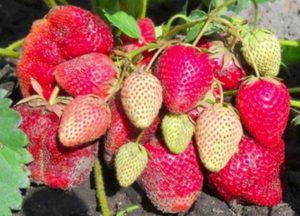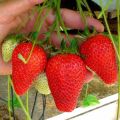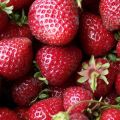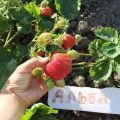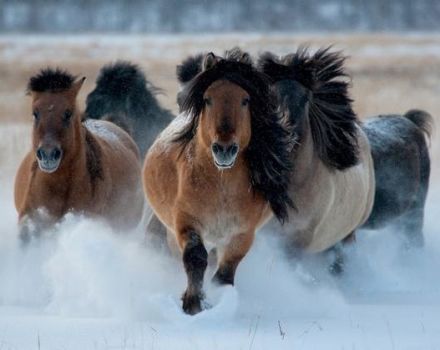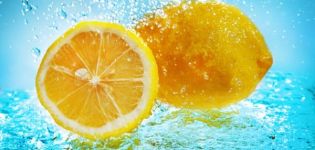Description and characteristics of strawberries of the Albion variety, cultivation and care
Garden strawberries are not easy to grow. The culture is demanding in terms of care and adherence to agricultural technology, but new varieties are constantly being developed that take root even in adverse climate conditions. A little more than 10 years ago, the Albion strawberry was created in California, which pleases with a harvest of berries, regardless of the length of daylight hours. A relative of the strawberry, Diamante, feels comfortable in the mild climate of Europe, Canada, USA, grows in Ukraine, Belarus.
Description and characteristics of strawberries Albion
Garden strawberries of American origin in the temperate latitudes of Russia take root only indoors, but summer residents do not complain about the yield and taste of the fruit. The first remontant strawberries ripen in May, in the second month of summer, in August, and in the southern regions the last berries are picked in October.
Morphological signs
The Albion variety has beautiful and branched spherical bushes that grow up to 40 cm in height. The dense, shiny strawberry leaves end in teeth. The berries are laid on strong and elastic straight peduncles with white petals and do not fall to the ground, do not get dirty, do not rot. Short stalks detach from strawberries without any problems. A little mustache appears on the bushes.
Berries
Under favorable conditions, the Albion strawberry is filled with juice, when ripe it acquires a dark raspberry color. Individual fruits weigh about 60 g, but the average weight is 40 grams.

Berries have:
- cone or heart shape;
- juicy and dense pulp;
- sweet and sour taste;
- pronounced aroma;
- high sugar content.
Unripe strawberries have a white tip. There are few seeds in the fruits. The leaves at the calyx bend up. Ripe berries do not drain off, do not wrinkle, do not deform.
Yield
The productivity of the Albion variety depends on the characteristics of the climate and the agricultural technology used. In the southern regions, 1.5-2 kg are harvested from a bush 3-4 times, but in the middle latitudes of Russia, even in a greenhouse, from 300 to 900 g of strawberries per 1 sq. m area.
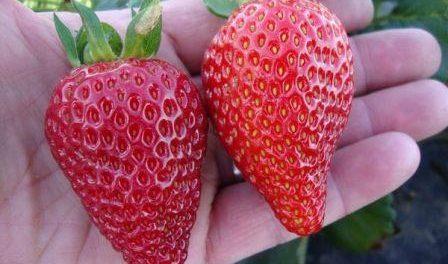
Natural Growth Region
The variety is adapted to humid warm climates. Besides California, strawberries are comfortable in Italy, Greece. Albion is also planted in the south of Russia, but the plant will have to be watered often. In temperate latitudes, remontant strawberries are cultivated in greenhouses.
Resistant to climatic conditions
A hybrid variety created in a region where it is always warm and a lot of sun, Albion does not tolerate even slight frosts. With heat over 30, productivity drops.
Advantages and disadvantages of the variety
American-made strawberries have many benefits, but they all come up when grown in favorable climates.
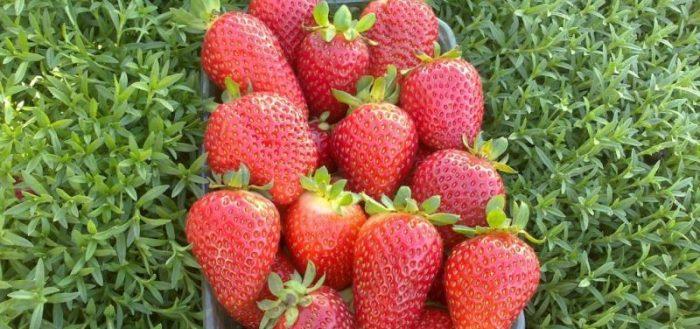
The advantages of the variety include:
- beautiful appearance of berries;
- high commercial qualities;
- the presence of immunity to disease;
- repeated collection of fruits.
Strawberries are transported without losses, stored for a long time, used for industrial purposes. Albion also has disadvantages. With a lack of moisture, the bushes wither, the ovary is poorly formed. Large berries become smaller by the end of the season. The variety is affected by brown spot.
Planting remontant strawberries Albion
Growing strawberries requires knowledge and adherence to agricultural techniques. Without careful maintenance, you should not hope for a good harvest. The American hybrid loves moisture and warmth.
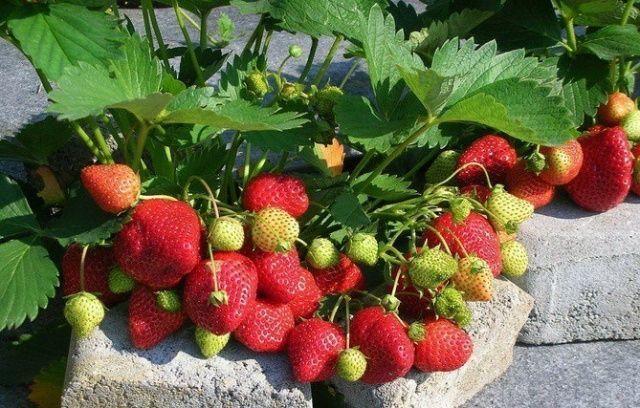
What place is suitable for planting strawberries
A site for growing Albion strawberries should be looked for not in a lowland, but on a small hill. On the territory of the cottage, it is necessary to allocate a place on the southwest side. The soil in the selected area is carefully dug up, weeds are removed from the root, peat or compost is introduced.
How to plant seedlings
In the spring, when the average temperature settles at 16 ° C and the frost will definitely not return, or at the beginning of September, strawberries are planted in the open ground. The bushes should have at least 5 leaves and a fibrous root. Place pots with seedlings every 15 cm, leaving 0.7 m between rows, moisten abundantly. This procedure should be performed on a cloudy day or early in the morning.

How to care for strawberries
2 weeks after planting, you need to check whether all the bushes have taken root, a new strawberry is placed in the place of the dead. The variety is very fond of moisture; in the heat, plants are watered every day.
Weeding and loosening
So that young bushes do not drown out weeds, they must be constantly fought with. Albion strawberries do not tolerate heavy soil; some gardeners add sand to the plants. The soil needs to be loosened after rain and moisture, which helps to improve the structure of the soil. The beds are covered with mulch so that the water evaporates less.
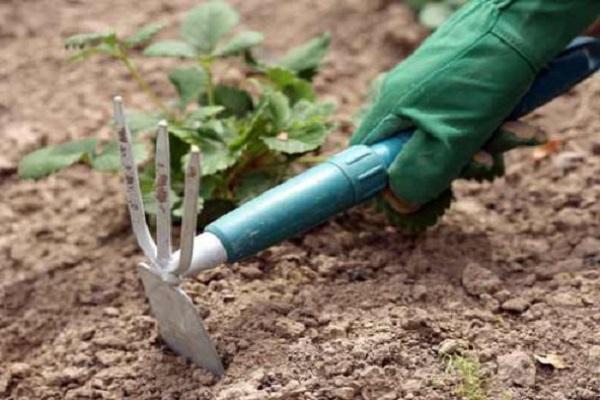
Watering and feeding
In the spring, both adult plants and seedlings need to be constantly irrigated so that the topsoil does not dry out. When the berries ripen, Albion strawberries should be watered less often, otherwise the fruits will be tasteless and watery.
After collecting the strawberries, you need to start irrigation again, since the ovary will not form, and there will be no new harvest.
In early spring, strawberry beds are fertilized with a fermented solution of mullein or bird droppings. Ash and carbamide are added to the composition. Bushes are fed when flowers appear, in addition to organic matter, mineral complexes are introduced.
In early June, mullein is used again, at the end of the month, strawberries are fertilized with wood ash. In August, the plants are fed for the last time with organic substances.
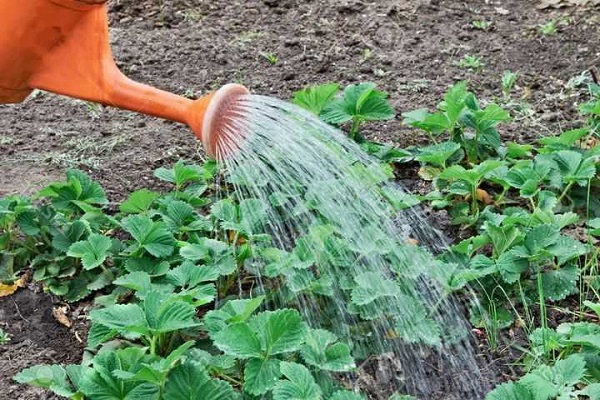
Preparing for winter
Heat-loving Albion does not tolerate frost. Where strawberries are planted in an unprotected area, plants are fertilized and covered in autumn:
- straw;
- needles;
- sawdust.
Having mulched the bed, they make arcs onto which they stretch the agricultural canvas, film or other material. In early spring, strawberries are freed from shelter.
Reproduction methods
To breed the Albion variety on the site, they divide the bush, use seedlings that are grown from seeds, or a mustache. The first method is most effective:
- The strongest and most mature strawberries are selected.
- Using a knife, several parts with roots are disconnected from the bush.
- Sections are disinfected with a solution of potassium permanganate.

They start planting in the spring or at the end of summer, so that the plants have time to get stronger by winter. In another variant of reproduction, 4 or 5 antennae with rosettes are separated from the strongest strawberries, they are placed in plastic cups, where the substrate is poured in advance. When roots appear, the bushes are moved to a permanent place.
In the first year after planting, the berries must be picked to strengthen the plants.
Most often, strawberries are bred by the dividing method, since the seeds do not all germinate, the seedlings take root for a long time, the variety has few whiskers.
Protection against diseases and pests
To prevent the activation of fungi and bacteria, the invasion of parasites, it is necessary to clean the beds from dried stems, fallen leaves, weeds. Thickening of plantings, stagnation of moisture should not be allowed. Protects strawberries from diseases, increases the immunity of plants by feeding with organics and mineral complexes.
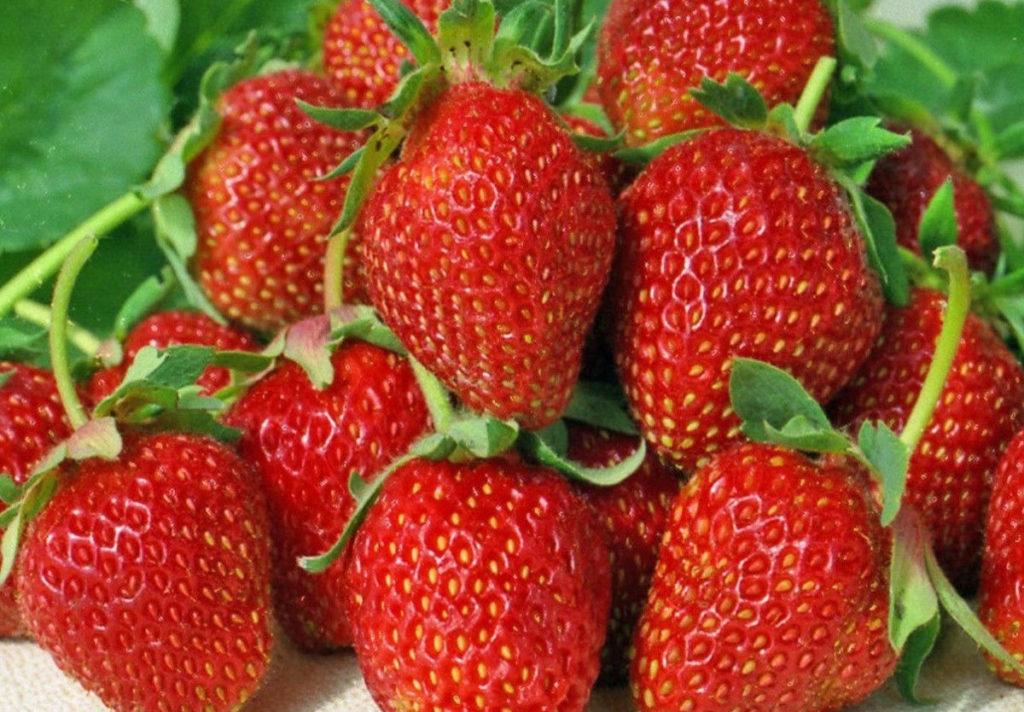
It helps to avoid strawberry infection:
- spraying young bushes with Topsin-M;
- soil treatment with fungicides;
- removal and burning of infected plants.
Strawberry Albion attracts spider mites, weevils, suffers from slugs and nematodes, May beetle larvae. For prophylaxis, folk remedies are used, the bushes are sprayed with fungicides, Bordeaux liquid. To cope with the appeared parasites, plants are treated with insecticides.
When and how to harvest
Depending on the climate, the first Albion berries ripen in the third decade of May - early June. In the southern regions, strawberries are tied and ripened 4 times per season, in mid-latitudes, the crop is harvested three times, in September or October, the fruits do not ripen. Strawberries are plucked together with sepals.
